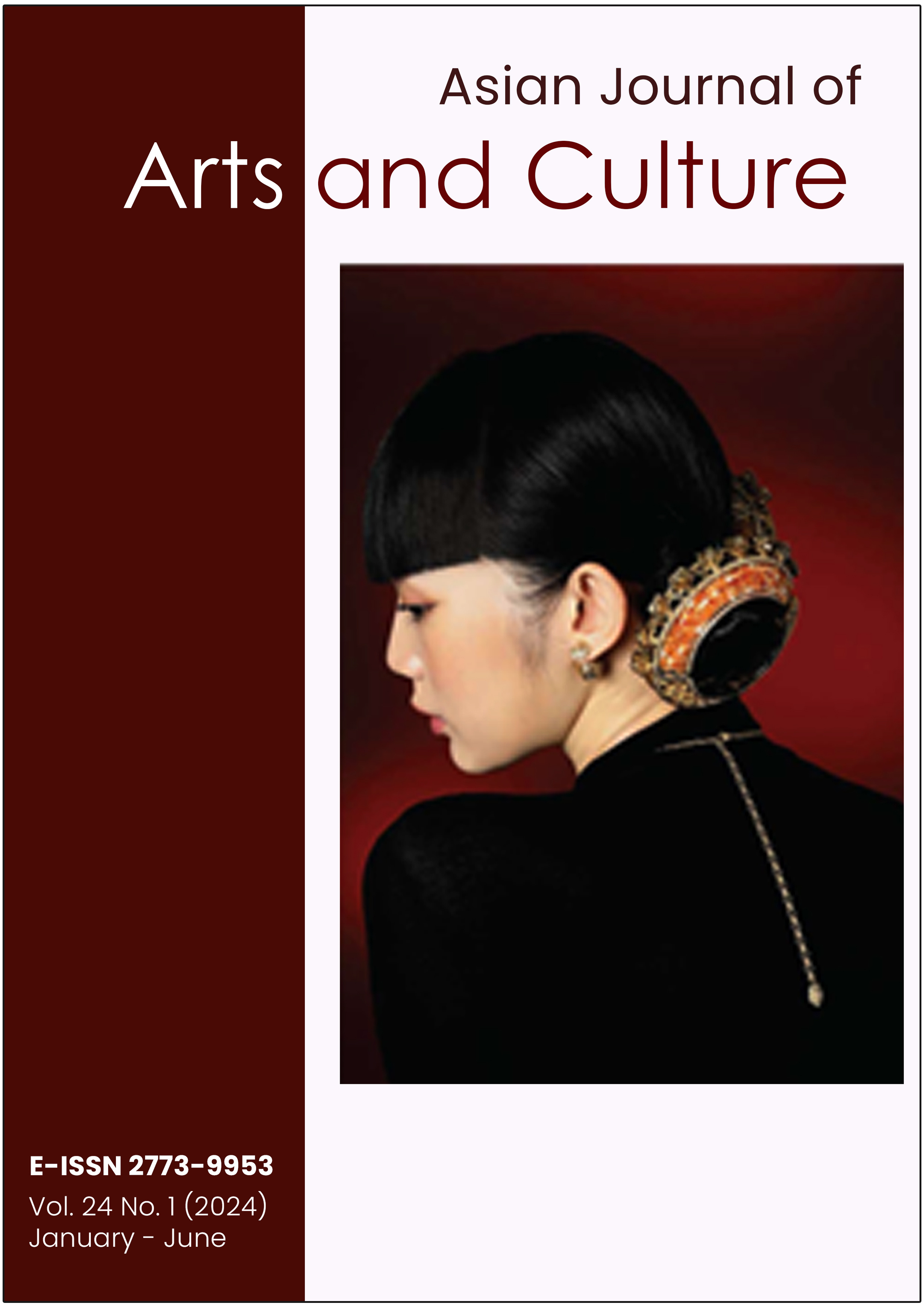The Thai Chinese-Malaysian Bonding Story of Baba Nyonya’s Cuisine in Phuket to Contemporary Jewelry
Main Article Content
Abstract
As a researcher who was born and raised in the culture of the Phuket Baba clan and is familiar with traditional Phuket local food, I understand how the past and present interweave seamlessly and harmoniously. I, therefore, would like to present the identity of Phuket’s local gastronomy or Pun Teh cuisine through contemporary jewelry design with the purpose 1. To design contemporary jewelry that can be applied to create a commercial prototype from studying the history, significance, meaning, and beliefs of Phuket local food. 2. To search for substitute materials from raw materials used in cooking Phuket local cuisine with a production process that is friendly to the environment to substitute the use of consumables in the jewelry industry. 3. To design jewelry through Phuket local food cultural capital that can be used as a commercial prototype in the future. This research uses a mixed research approach consisting of quantitative research at the beginning and qualitative research with surveys primary and secondary data collections. The research utilizes the principle of cultural capital management for local food in Phuket, analysis, and experimental materials as a research framework. Research Area is the old town area known as Thalang Road in Phuket Province. The research model focuses on studying the history and significance of Phuket local food culture, raw materials for food preparation, meaning, beliefs, Nyonya wares, Siannah, and Toei Panan woven baskets.
The study found that Phuket local foods that are in line with the objectives of the jewelry design include crispy sticky rice, Hokkien noodle, O-aew or Aiyu, Moo Hong, and Tumi curry, by interpreting the identity of Phuket local food through the processing of raw materials used in food
Article Details

This work is licensed under a Creative Commons Attribution-NonCommercial-NoDerivatives 4.0 International License.
© 2018 by Asian Journal of Arts and Culture, Walailak University. All rights reserved.
References
Lillian, T. (2014). Straits Chinese Gold Jewellery. Pinang, Malaysia: Pinang Peranakan Mansion Sdn Bhd Press.
Naphaporn, S. (2022). Sam-rab Thai Food in 4 Regions. Retrieved from https://www.theworlds50best.com/asia/en/the-list/31-40/samrub-samrub-thai.html
Nattakarn, P. (2022). Wares of Holanda or Holland or Netherlands. Retrieved from https://www.gotoknow.org/posts/463254.
Phakdiwong, K. (1999). Phuket Local Food. Phuket. Phuket, Thailand: Phuket Rajabhat University Press.
Phuket Local Government Promotion Office together with Phuket City Municipality. (2018). Local Food in Phuket. Phuket, Thailand: K.Copy.Ordinary Partnership Press.
Ratsada Subdistrict Administrative Organization, Muang District, Phuket Province. (2007). Phuket local food. Phuket, Thailand: Udomlarp Printing House Surat Thani.
Rudee, P. (2002). Dressing for Women of Baba Phuket. Phuket, Thailand: Peranakan Association Press.
Rudee, P. (2010). Marriage of Baba Phuket. Phuket, Thailand: Peranakan Association Press.
Thalang National Museum Phuket Province. (2022). Chinese Porcelain Set. Retrieved from https://www.finearts.go.th/talangmuseum/view/11925-Tea Namthong-ware.
Thonglor, W. (1882). History of Southeast Asia. Phuket, Thailand: Thip Aksorn Karn Phim.


